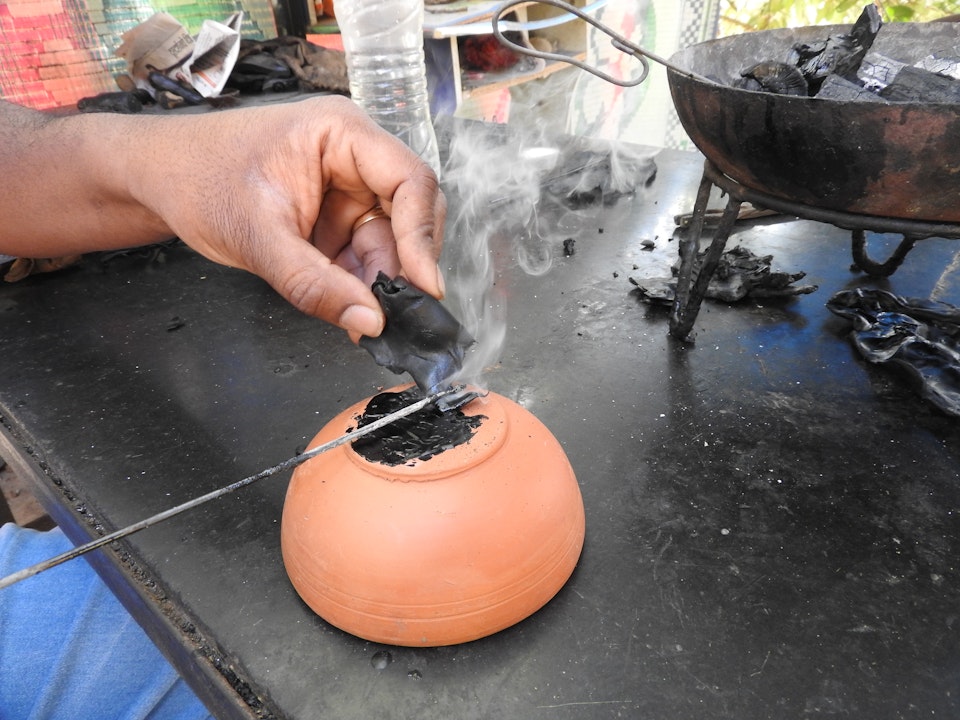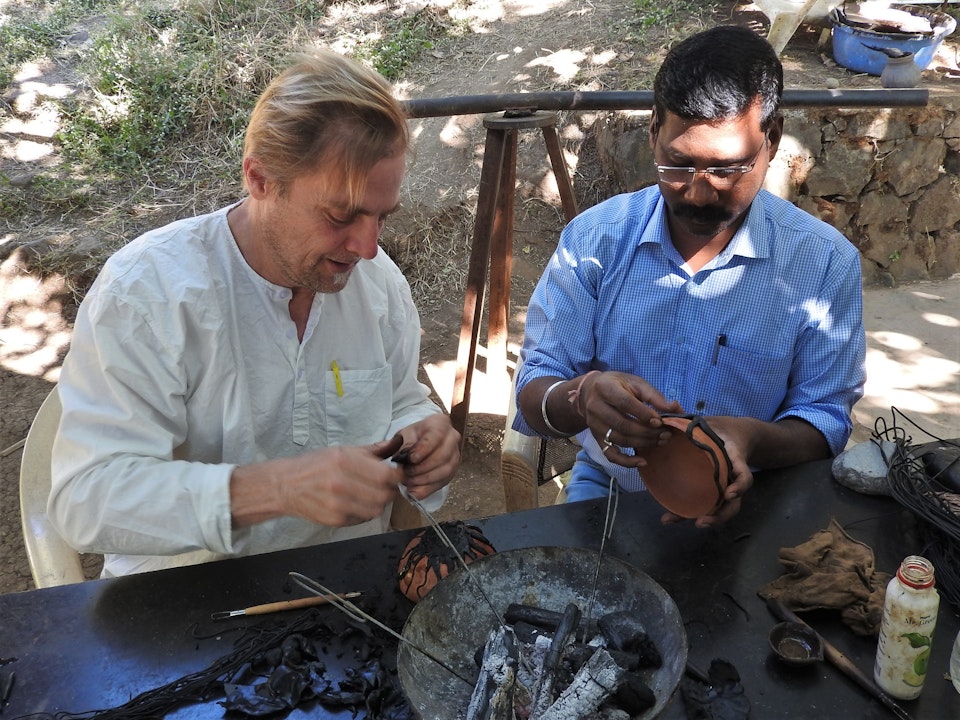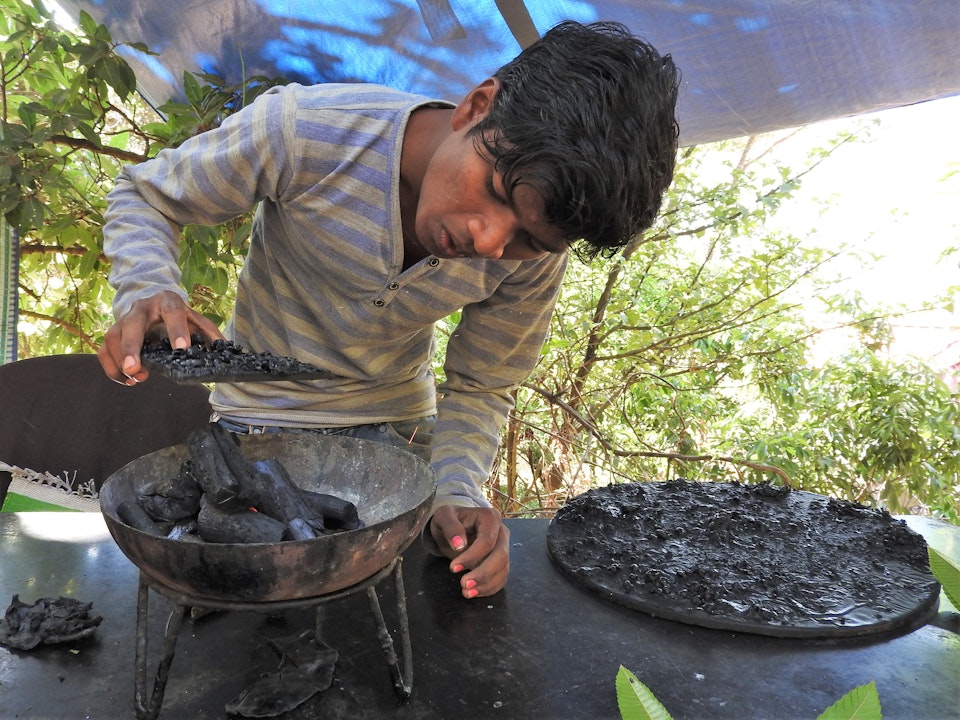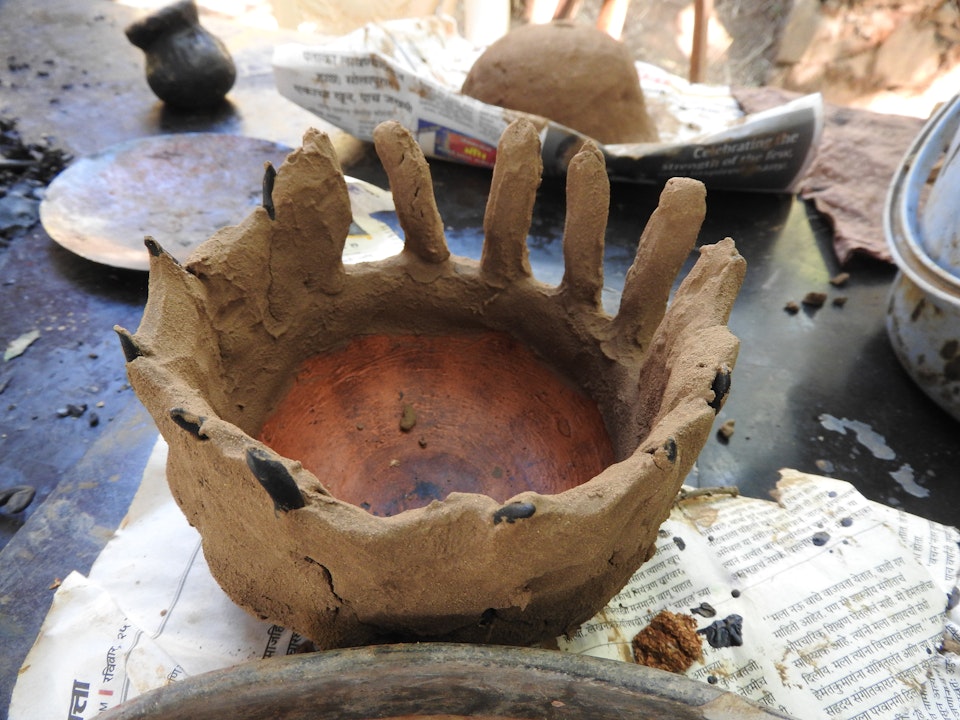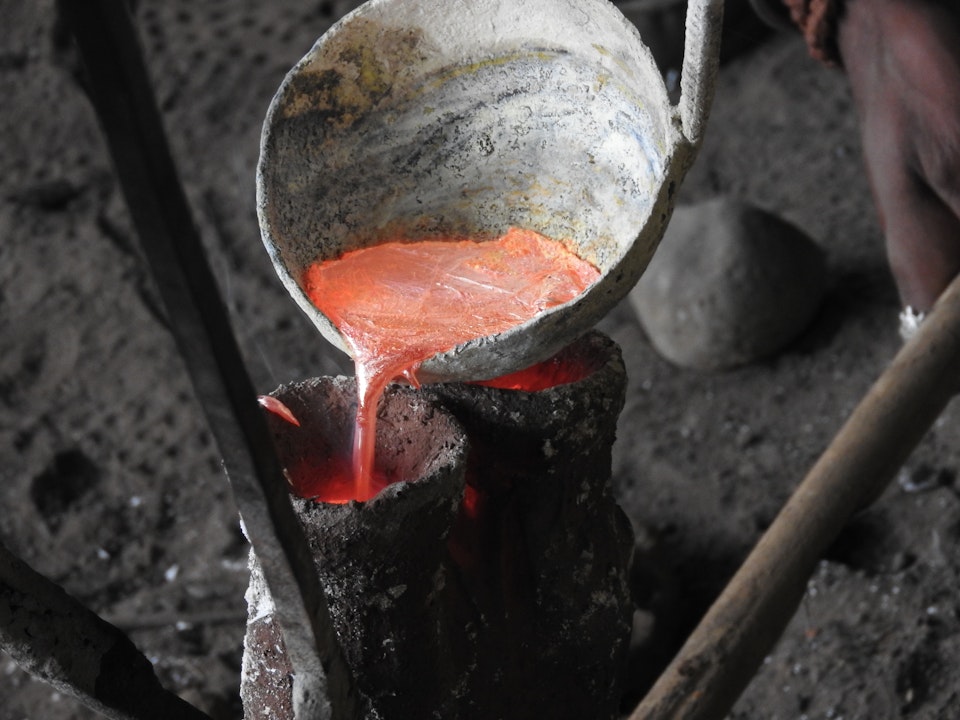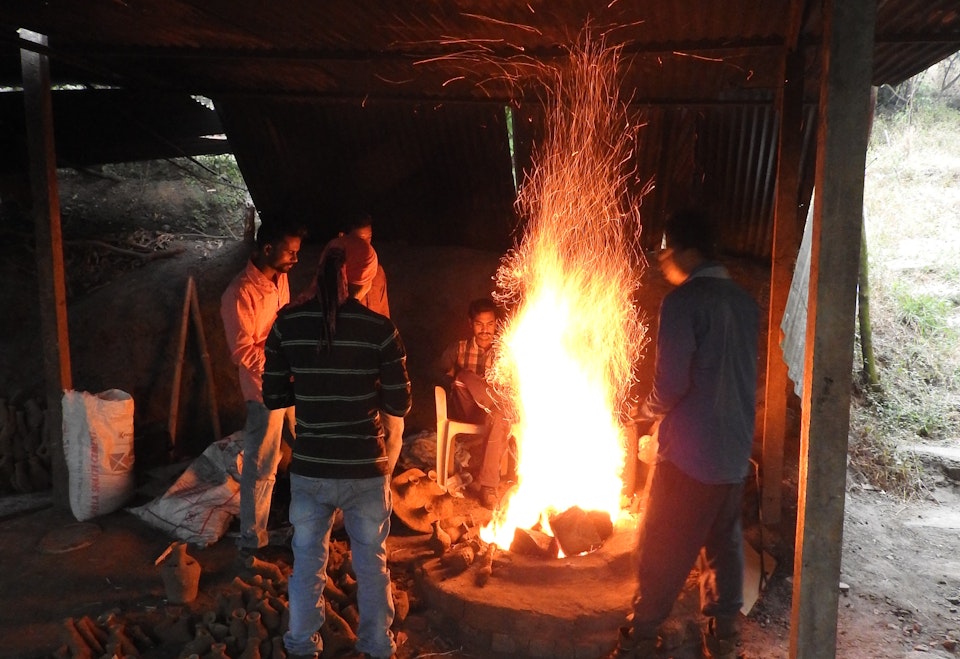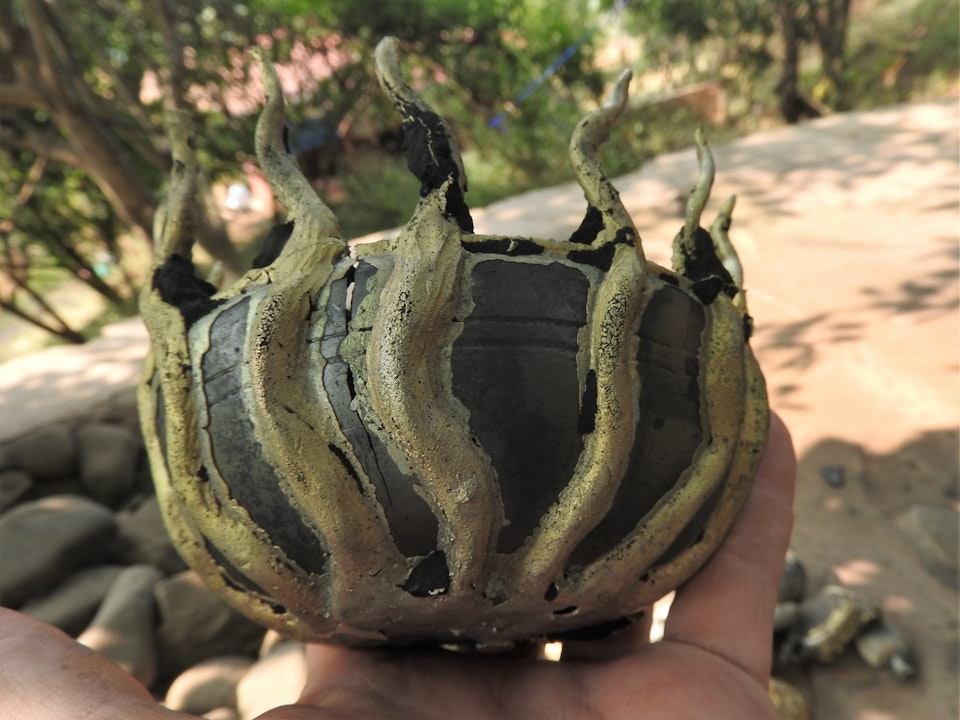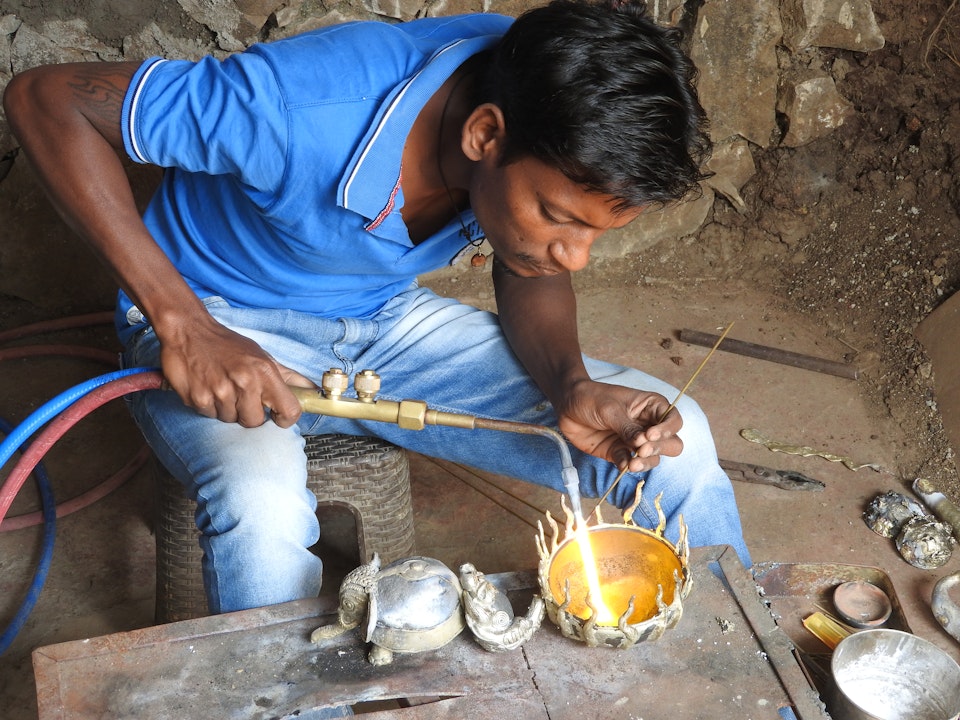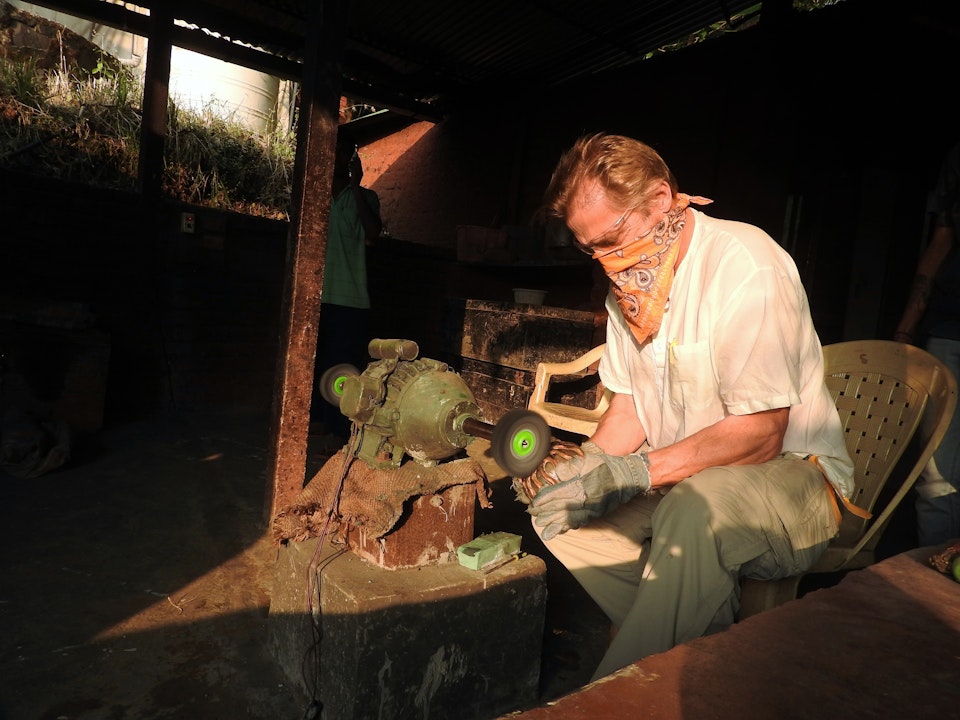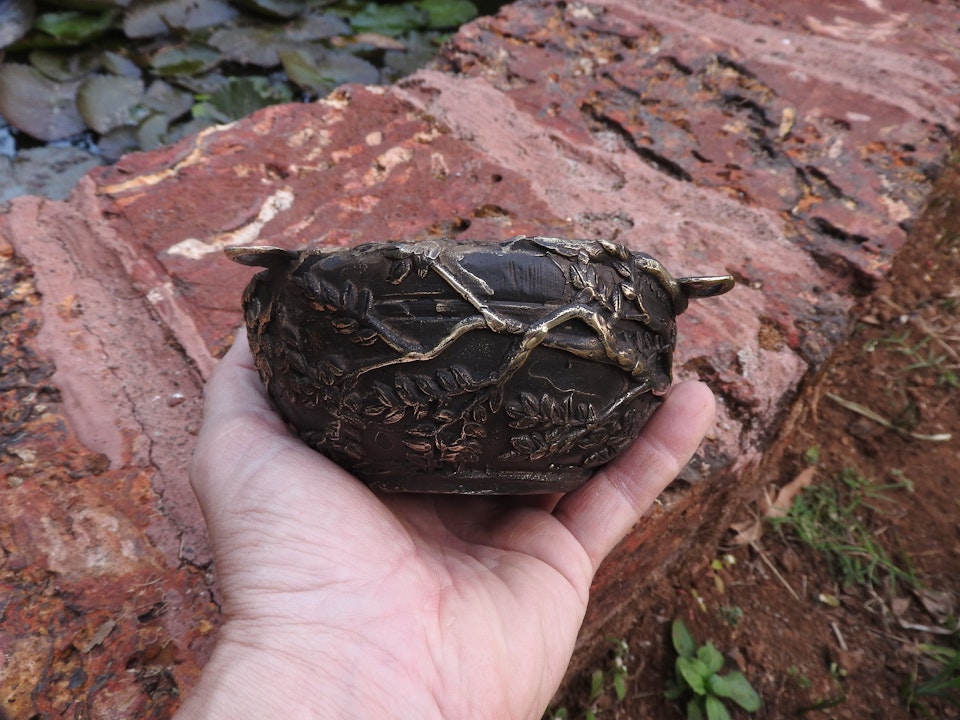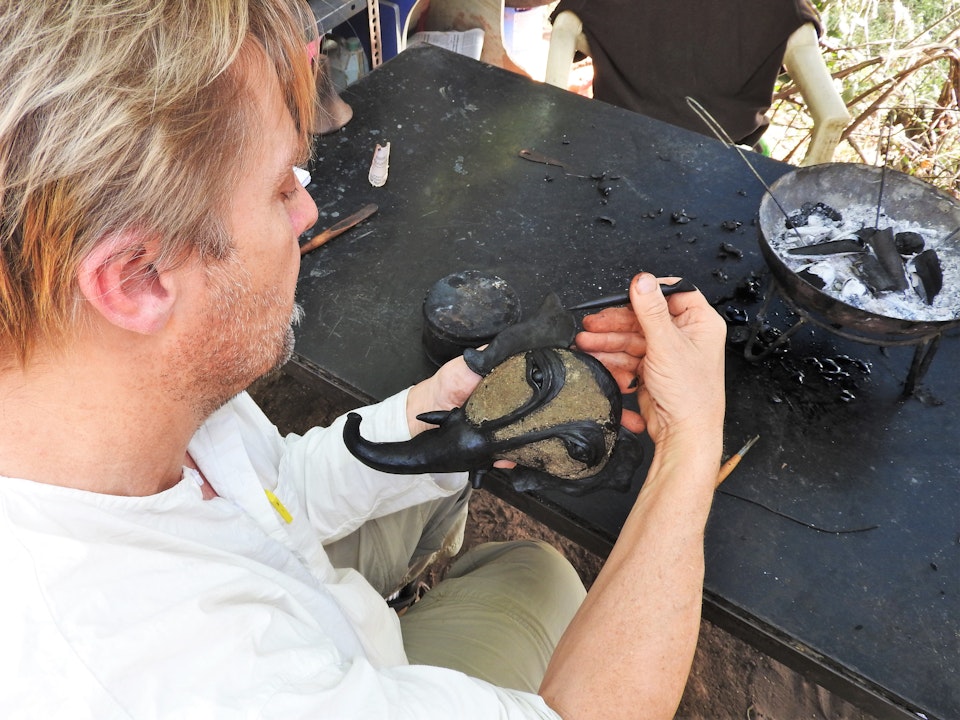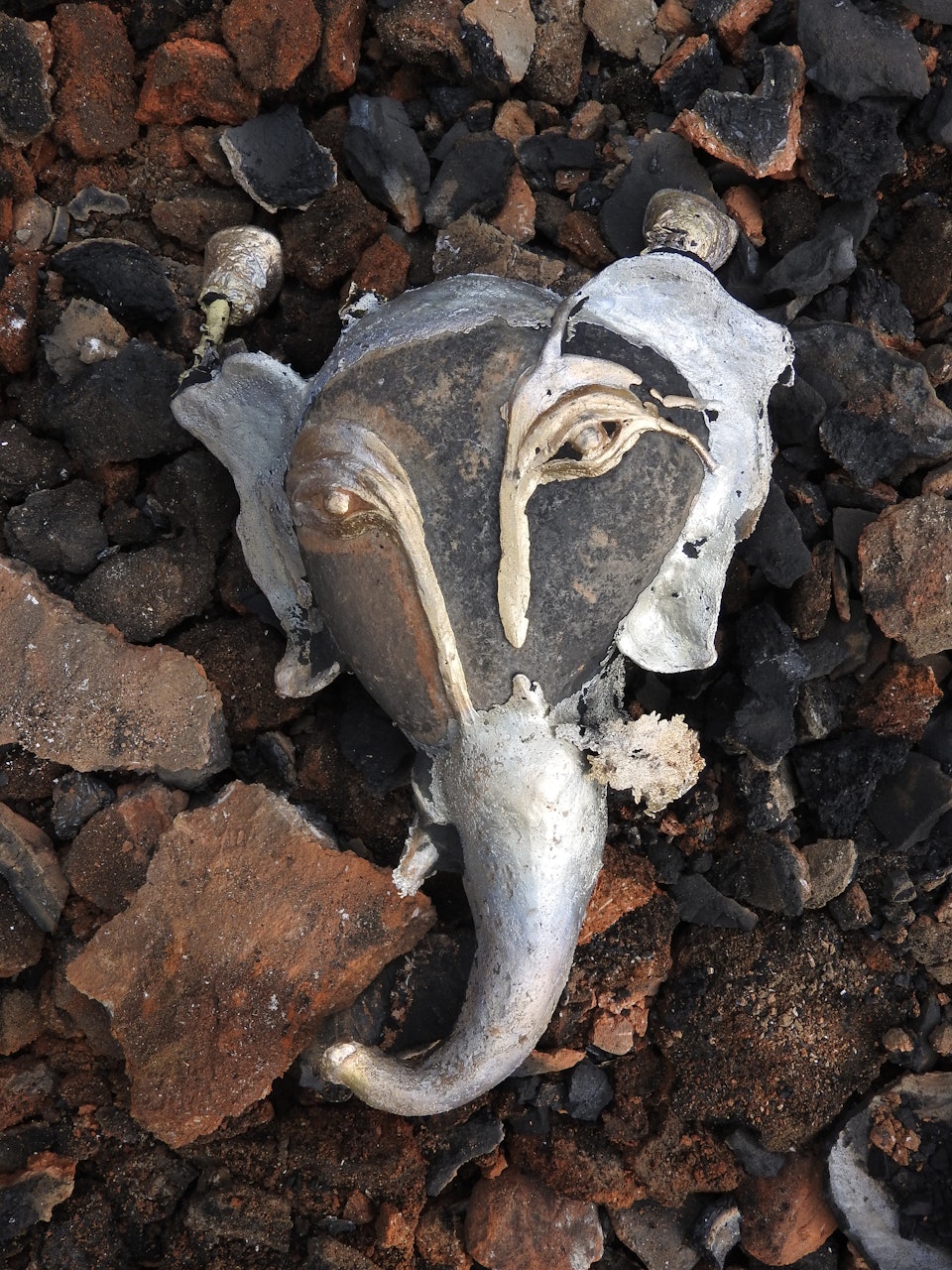January 08, 2019
Treasured Memories Learning Dhokra Metal Art in Panchgani
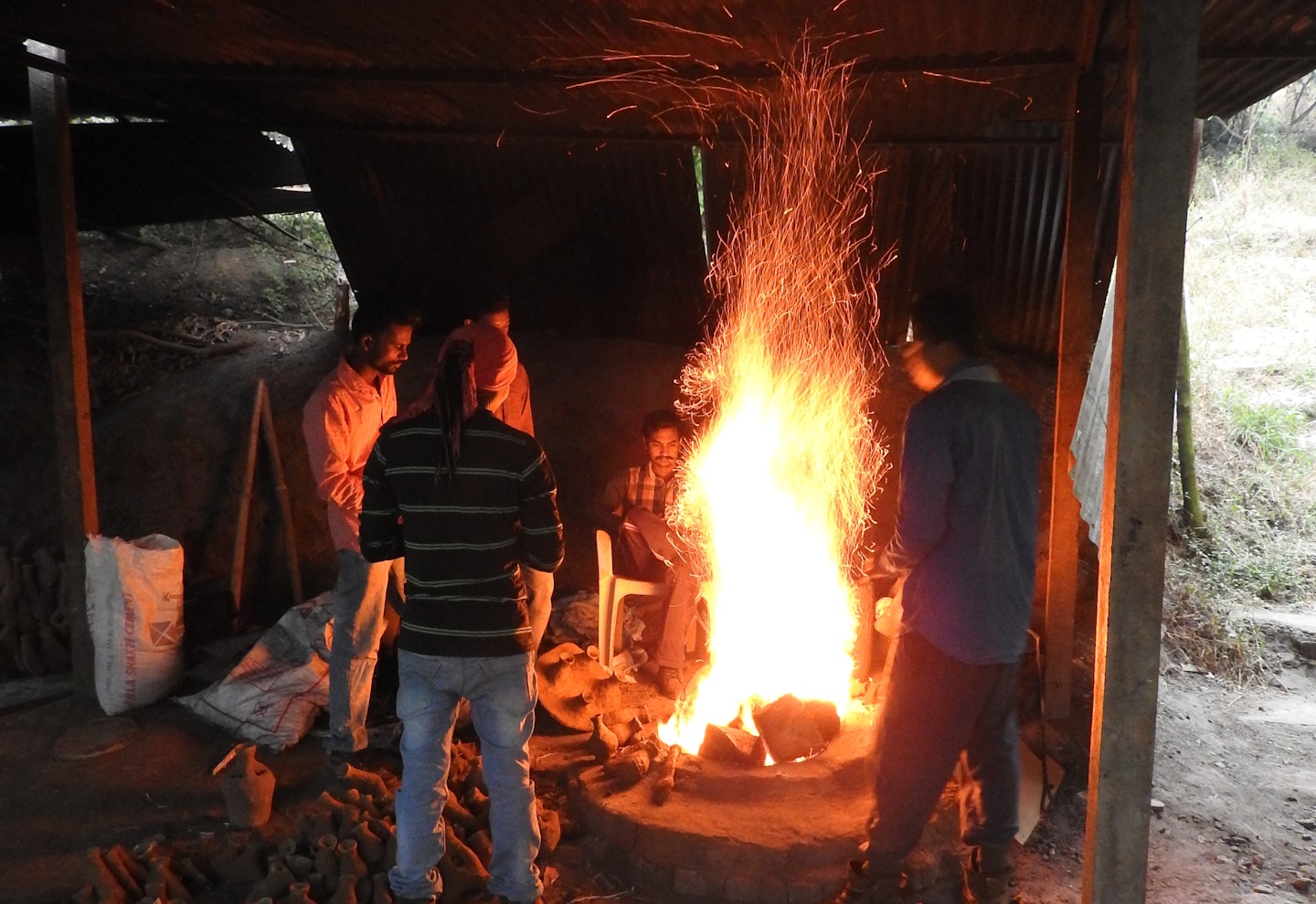
I travel to India a lot, at least twice a year, and always try to include as much local art as possible. So when I heard about the Vacation With an Artist experience that pairs travelers with local artists in over a dozen countries across the globe, I was immediately intrigued. Seeing that VAWAA had four programs in India, I jumped at the chance to discover what it held for me.
I sign up for a weeklong metal casting session at the Devrai Artist’s Village in the small hill station of Panchgani, five to six hours from Mumbai by road. I will be spending the next six days working with Suresh learning Dhokra metal work, a 4000 year old Indian technique of lost wax casting with primitive materials. The artist colony is located high on a hill with a stunning view of the valley below; an ideal place from which to enjoy both the sunrise and the sunset in the winter.
After a brief design conference on my desired art pieces, Suresh immediately walks me through the first steps of the process. My first revelation is the abundance of support staff that also works in the colony. I first meet Somesh, Rakesh, and Mahesh, all of whom eagerly jump in to help stoke the fires, melt the wax, grind the selected stones, mix sandy mud to the exact proportions and a myriad of other tasks. Seated under the broad canopy of an enormous fig tree, Suresh patiently instructs me on the process while his small army of helpers ensure that I am well supported.
Courtesy of Steve Mannshardt.
Steve working alongside VAWAA master Suresh. Courtesy of Steve Mannshardt.
In the days ahead, I work on various aspects of my projects, sometimes keeping a few going at once. The open environment of the artist colony is a freeing way to create, taking advantage of the soft breezes, the warm sunlight and the collaborative environment. One of my projects is rather complex, so I work together with one of the craftsmen to ensure that the project is a success. At no time to I feel like my creativity is hampered. Instead, I find the outpouring of artistic support a valuable part of the process.
Courtesy of Steve Mannshardt.
Terra cotta lamp coated in its first layer of clay. Courtesy of Steve Mannshardt.
The fifth day is indeed magical. Although just after 5:00am, the staff is abuzz with activity. About 120kg of scrap brass is being loaded into a large graphite crucible and a large fire pit is being prepared. Somesh is in charge of the casting and, although he has done this dozens of times before, I can tell that he still has a magical energy about him as he prepares to light the fire. The first flame creates a tower of yellow flame over three meter tall before it settles down to a deep roar. Fire is always captivating but this one has all of us staring deep inside as if it held the secret of the Universe. It will be many hours before the brass is fully molten, so it is indeed a measure of patience that plays out now.
Midday, the process begins anew as the molds themselves are placed into another kiln and hot embers are placed over them to melt out the wax. As we had encased our wax and stone forms into wet clay the other day, we said a brief goodbye to the art. Today we see the process take on a different form of energy as molten metal cascades into the work and creates something to be left unseen for many hours.
The crucible is uncovered and Somesh stirs the fiery liquid while it releases great plumes of yellow and green pyrotechnics. There is something incredibly primal about fire but a pool of molten metal belching colorful flames has us all utterly rapt in attention.
With deft artistry, Somesh ladles out a bowl of molten brass and pours it carefully into the funnel of the first mold. Like a human machine, the five men work in flawless synchronicity. The molds come out of the low fire while two others each hold one in enormous steel tongs for Somesh who is pouring nonstop.
Pouring molten brass carefully into the mold. Courtesy of Steve Mannshardt.
Long after darkness falls, the nearly empty crucible is pulled out of the kiln and set aside. Its bulbous form glows an iridescent pink that looks rather unworldly as it very slowly creeps towards fiery orange and then a dull red on its way to gray once again.
After a full fourteen hours of hot and dusty back-breaking work, the eight men stand around sharing a fraternal bond that seems to come naturally from forging art out of what appears to originate from the core of the Earth. I don’t speak their native tongue but I can tell that they discover this magic each and every time they cast and do not devalue its beauty, no matter how many times they gather.
Adivasi craftsmen congregating around the fire pit. Courtesy of Steve Mannshardt.
On Day Six I come down mid-morning to find no less than fourteen workers buzzing away at dozens of projects. Each project requires breaking apart the clay with a small hammer, a process that often resembles a form of birth that only artists can comprehend. Once the art is free from the clay, one person grabs a power cutting wheel to trim off the excess while others grab the trimmed items and grinds them smooth at the edges in a shower of flying sparks. Mahesh wields a gas torch and brass rods to mend any flaws in the casting that need repair before the pieces proceed.
After casting and breaking apart the clay. Courtesy of Steve Mannshardt.
Mahesh repairing any flaws. Courtesy of Steve Mannshardt.
Upon seeing my projects emerge, I find new inspiration in their current forms. Some of the casting went perfectly but other aspects show significant flaws. As a career artist, I know this part of the process and immediately embrace the new forms that have been uncovered.
The final step in the process involves applying a chemical patina and then buffing much of the blackened residue away, leaving the gleaming brass shining above the dark crevices. I, however, really like the blackened finish and use lighter touch with the buffer so that more of the antique look remains.
Steve buffering residue. Courtesy of Steve Mannshardt.
On the final morning before my departure, I get to view the pieces in the full light and find them to be far more amazing than I had expected. As I depart for Mumbai, Suresh and his team bid me farewell and safe travels. I head off onto the rural roads of India, content that the week’s adventure has yielded so many amazing discoveries and treasured memories.
Courtesy of Steve Mannshardt.
Steve's most ambitious project: a large head of Ganesh, based on a river stone for the skull. Courtesy of Steve Mannshardt.
Head of Ganesh. Courtesy of Steve Mannshardt.
Written by Steve Mannshardt
Vacation with Suresh in Panchgani, India
For more stories and new artist updates, subscribe here.
